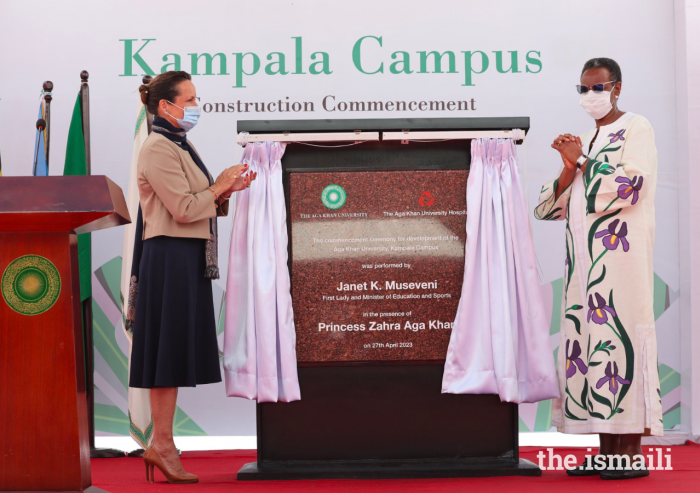The sessions were held at Darkhana and Kololo Jamatkhanas and facilitated by the National Council of Uganda and ITREB. Rahim Adtani, Honorary Secretary of ITREB and Zaheer Nathani, National Council member were the leads of this Programme.
Farouk Noormohamed, a Fellow of the Royal Architectural Institute of Canada, has worked on a wide spectrum of global sites, including the Aga Khan University (AKU) campus in Karachi, Pakistan and the Ismaili Centre Dushanbe and several other Jamatkhana projects in Canada. During his address, Farouk shared with the Uganda Jamat that there were several challenges and with the Dushanbe project, he was unable to visit the site due to travel constraints and therefore had to submit a design proposal without actually visiting the site. All he knew about the project, was the competition mandate from Mawlana Hazar Imam that it had to be an “Ismaili, Tajik, Muslim building.”
Farouk explained that designing an “Tajik Ismaili Muslim building” was the challenging part and he took his inspiration from Samarkand architecture and Ismaili Pamiri residences, which were usually constructed with five columns representing ‘Panjtan Paak” (Peace be upon Prophet and his family). The five-column idea was not easy, however he managed to find a way to place the fifth column, and also introduced the Pamiri idea of 4 ceilings representing, earth, water, air and fire in the design.
The Ismaili Centre Dushanbe is a tranquil and thoughtfully designed building, in the heart of Dushanbe and set within gardens featuring fountains and beautiful trees and nature. At the opening ceremony of the Dushanbe Ismaili Centre on Monday, 12 October 2009 Mawlana Hazar Imam said, “The continuing pluralism of human endeavour will be manifested in the life of this Centre. It will be reflected in an array of exciting activities, serving people of many different backgrounds. The Centre will have a space for congregational gathering, just like the array of Ismaili Centres in major cities across the world, both those which are now being developed and those that already exist, from London to Vancouver and Lisbon to Dubai. In addition, we hope and trust that people of all faiths and background will gather here for educational and cultural events – for seminars, lectures, recitals and exhibitions. We will seek to demonstrate that spiritual insight and worldly knowledge are not separate or opposing realms, but that they must always nourish one another, and that the world of faith and the material world are the dual responsibilities of humankind.”
Farouk also gave the Jamat a virtual tour of the Dushanbe and Khorog Jamatkhana, pointing out the symbolisms, the brick patterns and the calligraphy. A Tajik family within the Uganda Jamat were moved to hear Farouk speak about the Centre which exudes Pamiri culture.
Farouk related many other heart-warming stories which touched many hearts. In a separate address to the youth, Farouk gave an interesting and inspirational account of his journey in becoming an Architect.
Faryal Khan, a recent Graduate from School of Architecture added “God is in the details,” and most of us would agree with that when we see our built environment. After meeting Farouk Noormohamed sir and knowing his experiences as an Architect, I would say every single thing we depict should have a reason and purpose to the design and environment we live in”.
Another architectural student, Tania Samnani who is in her final year, said.” Truly inspired by Farouk Noormohamed sir and his work. He exemplifies that as Architects we have a great responsibility to create designed spaces which give identity”.








